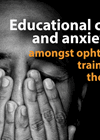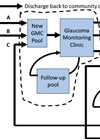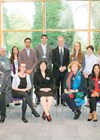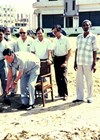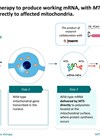Ophthalmology
Educational concerns and anxiety levels amongst ophthalmology trainees during the COVID-19 pandemic
How concerned are ophthalmology trainees about the present impact and the future consequences of suspended ophthalmic training programmes? Researchers in the West of Scotland investigate. Anxiety, stress and the longer-term stress reaction of burnout often go unrecognised, yet are known...
The Re-humanising Revolution: Breaking the conspiracy of silence
Over the last few years, the mental and emotional wellbeing of those who work in medicine has come under scrutiny. The author introduces a new resource. Working in healthcare has always been stressful but never more so than today. In...
COVID-19 and the eye: a review of ocular involvement and protective strategies
A lot of attention has been placed on the use of face coverings to limit COVID-19 transmission, but there has been less focus on ocular involvement and ocular protection strategies. The author reviews the literature and discusses possible solutions. The...
Reflections on deployment to ICU
Being unexpectedly uprooted from ophthalmology to ICU during the coronavirus pandemic was certainly a challenge, not just clinically, but emotionally and personally. However, it is only through adversary that we learn to appreciate what we have, and there are definitely...
The COVID-19 ‘frontlines’: a foundation doctor’s perspective
Staring through the fragmented stained glass of the Virgin Mary and her assorted angels, I reflected on the strangeness of the workplace I now found myself working in and the irony of a workforce now working together more enthusiastically than...
Make eye drops part of your Ramadan routine: wake, drops, eat, pray, done!
During the holy month of Ramadan, Muslims fast during daylight hours, abstaining from food and drink between dawn and sunset each day. Ramadan 2020 starts on 23 April and ends around 23 May, depending on the first appearance of the...
COVID-19 and Charles Bonnet Syndrome
As COVID-19 rips through the country, it is – of course – imperative that we stay at home to try and prevent the virus spreading through the whole community. We are all aware of the need to take special care...
Designing ophthalmology services Part 2: How do we address the queues for a clinic?
The first of this three-part series showed how systems engineering can be used to correctly diagnose and address the causes of delays in a clinic. This second article describes how to design a more productive system that meets the new...
The Leicester Grading System for Foveal Hypoplasia
The University of Leicester Ulverscroft Eye Unit have published the first medical grading system named after the city of Leicester. Infantile nystagmus is characterised by constant and involuntary eye movements and affects 24 per 10,000 people [1]. Onset is usually...
A focus on Pakistan’s growing eye care needs: over 43 million patients treated for curable blindness free of charge
With 90% of the world’s visually impaired living in developing countries, Pakistan is no exception to this on-going global healthcare challenge. Despite massive leaps over the last few decades in targeting this issue, the World Health Organisation (WHO) reports that...
Renewed momentum in ocular gene and cell therapy, broadening application to chronic disease
Gene and cell therapies offer the prospect of ground-breaking new avenues for the treatment of diseases, reflected in a renewed explosion of interest and investment in retinal gene therapy. Rod McNeil reports recent clinical trial readouts across a diverse range...
Unconscious bias (part 2)
Does unconscious bias exist, and does training help to reduce discriminatory behaviour? Clare Inkster questions her role as a trainer. I read Gwyn Williams’ Learning Curve article on this topic a few months ago with interest, and as someone who...


